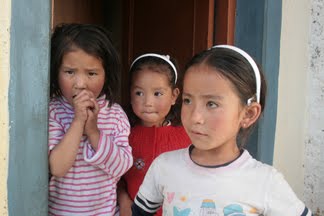by Peeyush Sekhsaria
Tehelka 7 June 2008
RECENT frenzy of the IPL league also takes shape in the form of traffic jams, massive litter, noise, fireworks and complete disorder. This mess is so much part of our psyche that we cannot think of sporting events otherwise. Can sports, whose roots are in a healthy body and mind, be so careless about the environment?
The movement to green major sporting events started off with the 1992 Greenpeace “Green Olympics” campaign for the 2000 Sydney Olympics. When Australia won the bid in 1993 a set of environmental guidelines formulated by Greenpeace were passed into law. Greenpeace released a report every 100 days from 1995 to 2000. In the final analysis Greenpeace gave Sydney’s environmental effort a bronze medal, a rating of ‘C’ or 6/10, with some remarkable successes and some disappointing failures.
However the credit to greening sports events should go to the German Football Association
(DFB) that voluntarily included, “Eco-friendly concept for our stadiums” in their 1983 bid for the 2006 FIFAWorld Cup. Led by Franz Beckenbauer, the organizing committee of DFB put in place “Green Goal” a campaign conceived by the Institute for Applied Ecology. Targets were established in key areas of waste, transport, energy and water that aimed to reduce significantly the environmental impact of FIFA 2006.
The construction and renovation of the twelve stadiums was conceived to reduce resource
consumption. Systems were put in place to assure that spectators arrived by environment-
friendly transport. Match tickets included free travel on local trains and the metro for the entire match day. The 6,000 journalists covering the event received a rail travel card allowing for free train travel across Germany during the event. Only 23 percent of the spectators came to FIFA venues in personal cars.
Rainwater harvesting, water conservation measures like dry urinals, five litre flushing cisterns, flow-reducer fittings in taps and other innovative measures saved 4,24,00,000 litres of potable water. Photovoltaics at the Dortmund stadium generate 5,55,000 kilowatts annually. A study for the renovation of one of the venues indicated that modernization of older buildings could save upto twothirds of current electricity and heating costs prompting the city to offer a subsidy for private renovation projects. During the course of the year, while the new project was installed, production of solar power had increased four fold.
Waste generation was avoided right from the point of sale. Sausages were served in a bread roll without conventional paper plates. Official partner Coca Cola placed HFC-free coolers that emit upto 75 percent fewer direct greenhouse gases. (Greenpeace had conducted a massive campaign before the Sydney Olympics, asking Coca-Cola to go HFC free). Drinks were served in returnable containers for which spectators paid a deposit.
All these efforts resulted in reducing waste by 300 tonnes, though still leaving close to 1,500 tonnes to be taken care of. Despite all these initiatives FIFA 2006 still produced close to 100,000 tonnes of emissions. To offset this, projects worth 1.3 million euros were started in
South Africa, which hosts FIFA 2010, and in India. The Indian project — that of building Gobar Gas plants for 900 families in the Tsunami-hit Nagapattinam district — is expected to offset
30,000 tonnes of emissions over a period of 10 years.
Klaus Topfer, former director of United Nations Environment Programme (UNEP) and Green Goal ambassador, and Sven Teske of Greenpeace have expressed reservations, saying that Green Goal did not take into account the ozone damage caused by international flights that bring teams, officials and millions of fans to Germany for the World Cup. This despite the fact that Costa Rica promised to compensate for its team’s flight by investing in forests and Brazil travelled to all venues during FIFA by train.
Even the FIFA ‘06 organizing committee acknowledges their limitations in its report. They all agree, however, that this was a new start for the FIFAWorld Cup that should inspire host countries in the future.
Alongside sport and culture, environment has been declared the third pillar of Olympism by the International Olympic Committee. Green plans for Beijing 2008 are part of a growing ommitment to put environment at the forefront of sport.
India is preparing for two mega sporting events, the Commonwealth Youth Games in October 2008 at Pune and the Commonwealth Games in 2010 in Delhi, (India has tied up with UNEP for both) and is also hosting the IPL league. Looking at international sports events from the recent past and their hits and misses on their commitment to the environment could serve as an eye-opener for the government, environmental NGOs and other activists and citizen’s groups. •
Subscribe to:
Post Comments (Atom)



No comments:
Post a Comment